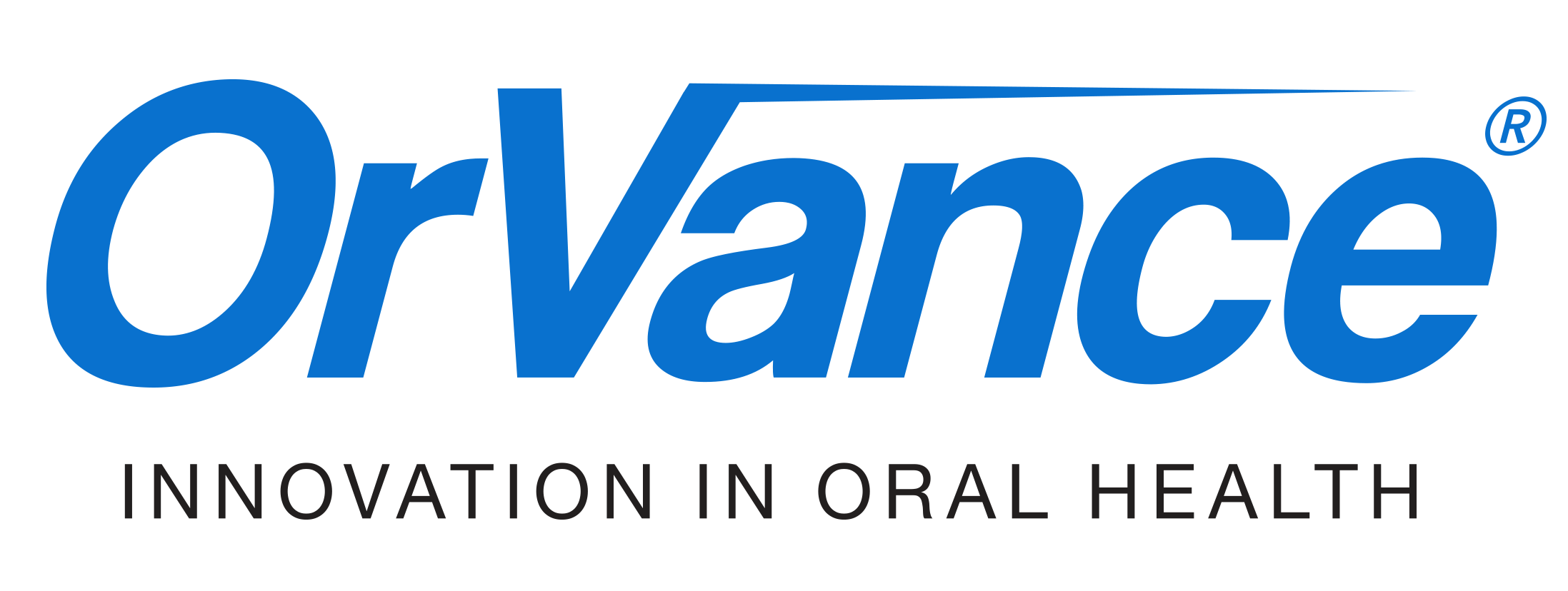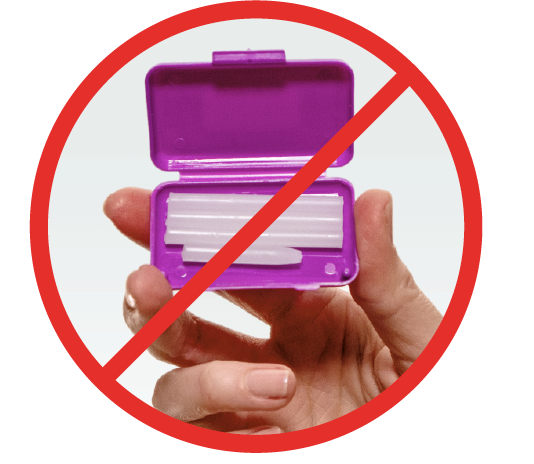By: Ron Schutt, Dr. Michael E. Silver (PhD), Dr. Eric Hannapel (DDS, MS, PC)
March 20, 2020

Even after decades of noncompliance, many suppliers continue to sell practices conventional/unlabeled dental wax. Here are 5 reasons why practices and patients should no longer use conventional dental wax during orthodontic treatment.
- Hygienic Packaging: Unlike other commonly dispensed healthcare products, conventional dental wax offers no hygienic packaging. For a product that comes in contact with saliva and even blood, is handled repeatedly and even known to be occasionally shared among children, dental wax is not appropriately packaged for today’s patient use.1 Research concludes viral and bacterial pathogens, including HIV, and hepatitis A, B and C viruses can live on wax substances for several days.2 As a result, this product that regularly comes in contact with saliva and blood must follow the healthcare product safety standard of being in hygienic unit-of-use packaging.
- Tamper Evident Packaging: Shortly after the Tylenol® tampering incident in 1982, tamper-evident packaging has become a universally accepted safety standard as measure to prevent tampering. FDA defines tamper evidence as “…indicators or barriers to entry, which if breached or missing, can reasonably be expected to provide consumers evidence that tampering has occurred”. Yet conventional dental wax is literally one of the last commonly dispensed products of its type in all of healthcare that offers absolutely NO tamper-evident feature.1 Can you determine if the dental wax you received from your orthodontist or dentist was previously opened? If not, why should this commonly dispensed product primarily used by children be exempt from this safety standard?
- Regulatory Compliance: Suppliers selling unlabeled dental wax to practices blatantly violate medical device labeling regulations in both the U.S. and European Union.3 These regulations were put in place over 25 years ago to provide product traceability to consumers and caregivers. Traceability is also a universally accepted requirement to provide the ability to identify and contain a potential public safety issue. The lack of product traceability and FDA required labeling on dental wax has for decades compromised patient adverse event reporting back to the manufacturers, who are required by law to report adverse events to the FDA. So we ask the simple question: Why do we allow these suppliers to continue selling practices a product they cannot defend as safe and fully compliant with FDA regulations?
- Manufacturer and Country of Origin: Most dental wax manufactures are outside the U.S. and most dental wax on the retail shelves is “Made in China”. While this alone may not be a bad thing, failing to provide this information on the package is. All imported dental wax without this basic information on the end unit dispensed to the patient violates medical device labeling regulations in both the U.S. and European Union.3 As of this writing, most of the dental wax being dispensed to patients is still unlabeled and in violation of the FD&C Act as enforced by the FDA. Even after advocating for almost two years on the need for compliance, no denial has been received from any of the 30+ suppliers that have been contacted. While we applaud the few suppliers in the orthodontic industry that have finally discontinued conventional dental wax altogether, most suppliers of conventional dental wax continue to ignore these quality and regulatory standards.
- Disclosure of Ingredients: Virtually all the conventional dental wax dispensed to patients and on the retail shelves in the U.S. offers no disclosure of ingredients. Ingredient disclosure has certainly become a fundamental consumer expectation for any manufactured product that goes into the mouth. Dental wax is a manufactured composite with several ingredients. Do you know what is in the dental wax you or your children use? If not, is this information easily accessible for the dental wax products on the retail shelves or given to patients in treatment? If not, why?
It’s time to finally rid the orthodontic industry of one of the most antiquated products in all of healthcare. Dental wax is still the most commonly dispensed product by the orthodontic profession as it is dispensed to virtually every patient in treatment where 75% of patients are children.
Many like us may find the extent to which unlawful dental wax has been sold to practices to be shocking. Millions of packs of unlabeled dental wax continue to be dispensed in the U.S. alone. It is also estimated that up to 10 million packs of misbranded (noncompliant) dental wax is currently in the possession of practices or households in the U.S. alone.3
Here are suggested measures to address the noncompliance and obsolescence of the dental wax still being used by most patients in orthodontic treatment:
Importers and Suppliers of unlabeled dental wax: PLEASE STOP! It is irresponsible to continue selling practices noncompliant dental wax just because “everyone else is still doing it” or “regulatory authorities haven’t forced us to stop yet” (these have been the top two reasons cited to OrVance from competitors stating their intentions to continue selling conventional dental wax). If industry suppliers do not voluntarily comply with current quality and regulatory standards, we would urge industry associations and other key influencers to intervene in the interest of patient safety and for the integrity of the orthodontic profession. Simply waiting for enforcement measures from the U.S. FDA or MHRA’s in Europe at a time when regulatory agencies have many conflicting priorities is irresponsible and even negligent.
Orthodontic and Dental Practices: Hold your suppliers accountable to these quality and compliance standards and return all noncompliant dental wax in your inventory with a request for a full refund. Ask your suppliers for a replacement product that is fully compliant with labeling regulations and meets all the quality and safety standards covered in this article.
Patients and Parents in Orthodontic Treatment: Don’t accept conventional dental wax from your orthodontist or dentist. It is important to note there are many good practices still dispensing conventional dental wax simply because they have not been provided a compliant replacement from their suppliers. If your orthodontist or dentist insists that conventional dental wax is effective and appropriate for use, ask them if they know exactly what’s in it, where it came from, and why it doesn’t comply with the basic quality, safety, and regulatory standards covered in this article. Or better yet, simply forward this article to them and ask for their review and response.
OrVance is a U.S. based company in Michigan that has been advocating for regulatory compliance and fair trade among their competitors that continue to blatantly violate medical device regulations and product safety standards. More information can be found at orvance.com
Sources:
- “Consumer Alert on Generic Dental Wax”, July 2019
- “Impression Disinfection”, Dental Economics, November 1, 1999
- “Research Concludes Dental Wax Dispensed to Patients Violates Regulatory Requirements in the U.S. and European Union”, December 2019



